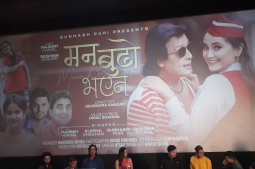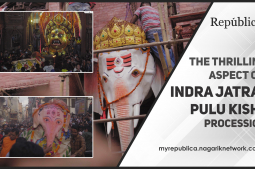CEO of Miss World Julia Morley talks about her COVID-19 speculation
4 years ago
_20200311200327_20200312135245.jpg)
4 years ago

4 years ago

4 years ago
Having water is one of our basic needs. Without water we cannot imagine our life. And it is estimated that Kathmandities need 400,000,000 liters of water every day. However, they get only 100,000,000 liters of water supplied through government pipelines. Nevertheless, there are underground water and transported water, alternative sources for water, but they are also not able to provide sufficient water in the Valley.
And the country’s dream project, Melamchi Drinking Water Project, has become a mere dream that is never going to be true and if it is completed, then also it won’t satisfy the needs here. The reason is — the project will supply only 170,000,000 liters of water, which means Kathmandu needs 130,000,000 liters of water more.
In this case, the best solution for water woes of Kathmandu is to use rainwater harvesting system. On an average Kathmandu receives 16,000 mm of water annually, which means in a year, a roof of one square meter can collect 16,000 liters of water. Rainwater harvesting is beneficial in many different ways because water collected via this process is free, saves time and can be stored for an entire year.
Rainwater harvesting is gaining popularity among major cities of the country. Some people think utilizing rainwater is good, healthy and viable. Whereas, some think rainwater is not contaminated and not healthy.
Some of the myths are listed below:
Rain water is dirty:
Rain interacts with several pollutants before falling to your roof, that’s why it carries chemical pollutions present in the air. As rain water is collected from a roof top, it also carries dirt present in your roof like bird’s poop, leaves and pebbles. However, these contaminants can be cleaned by a biological filter to upgrade the initial rain water to drinking water.
Rainwater harvesting is only for monsoon:
There is a false believe that we get rain water only during monsoon. But if we look at the statistic of rainfall in Kathmandu, there is rainfall in every two months on an average. And with the help of proper filter, rainwater can be preserved for more than six months. Then, we can raise the level of underground water through a rainwater harvesting system where extra rainwater can be collected in a big pit or well to recharge the level underground water.
Rainwater harvesting plant is expensive:
A normal rainwater harvesting plant that works for an entire year costs Rs 200,000. The system works for entire life and if installed with proper engineering, it also does not need electricity to operate. This will save thousands of rupees that you spend to buy water for your daily basis.
Rain water cannot be collected from a straight roof:
Most of the people believe that rainwater can be collected only from a slanted roof and if you have a straight roof, you cannot install a rainwater harvesting system. Every roof contains a drainage pipe, which can be connected to a system.
Cannot be used after few weeks:
There is a belief that storing water for more than few weeks will make it unsafe to use for households. But if you have a proper filtration technology you can use rainwater for entire year.


- by Sangita Shrestha

- by Sangita Shrestha

- by Sangita Shrestha
Leave A Comment